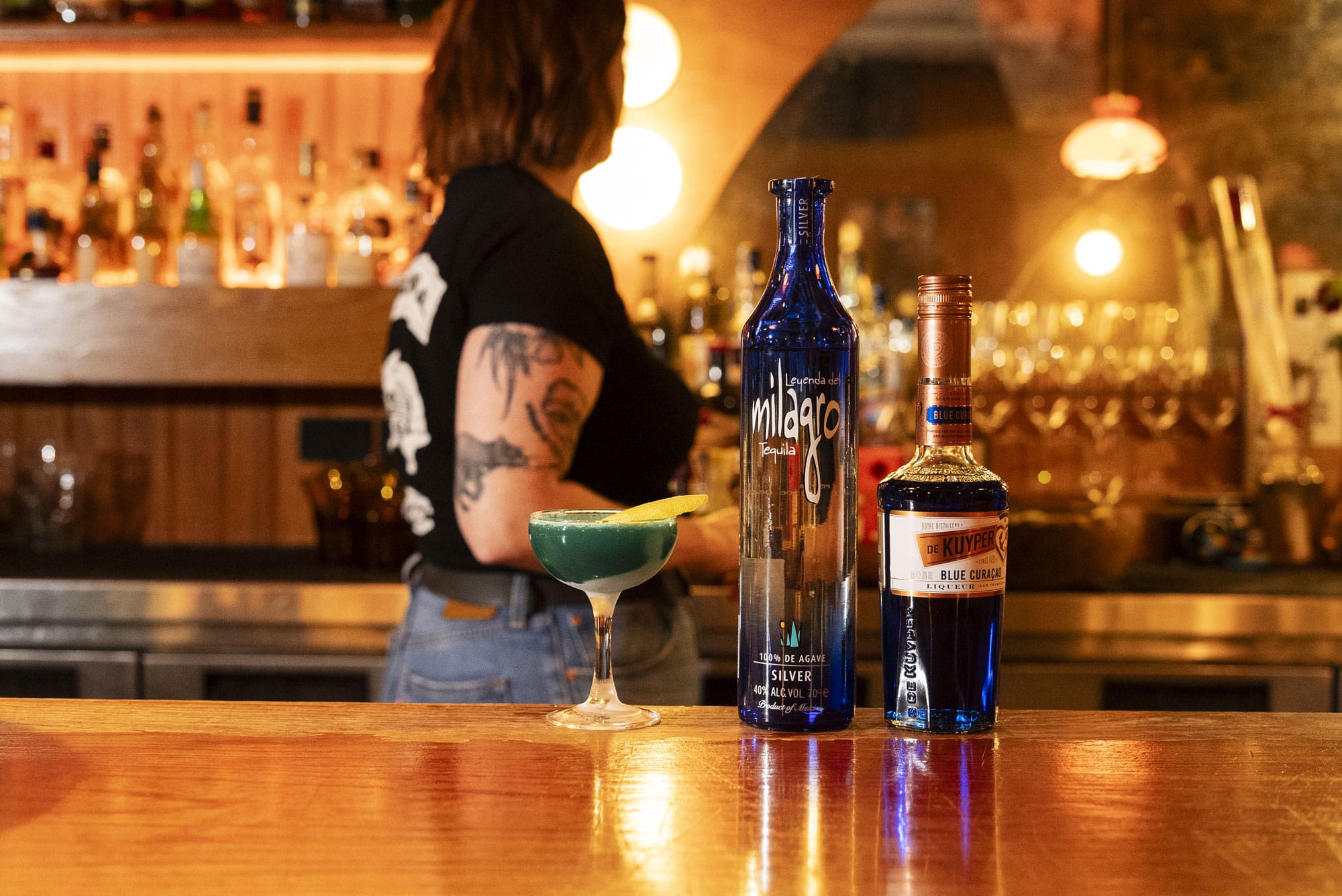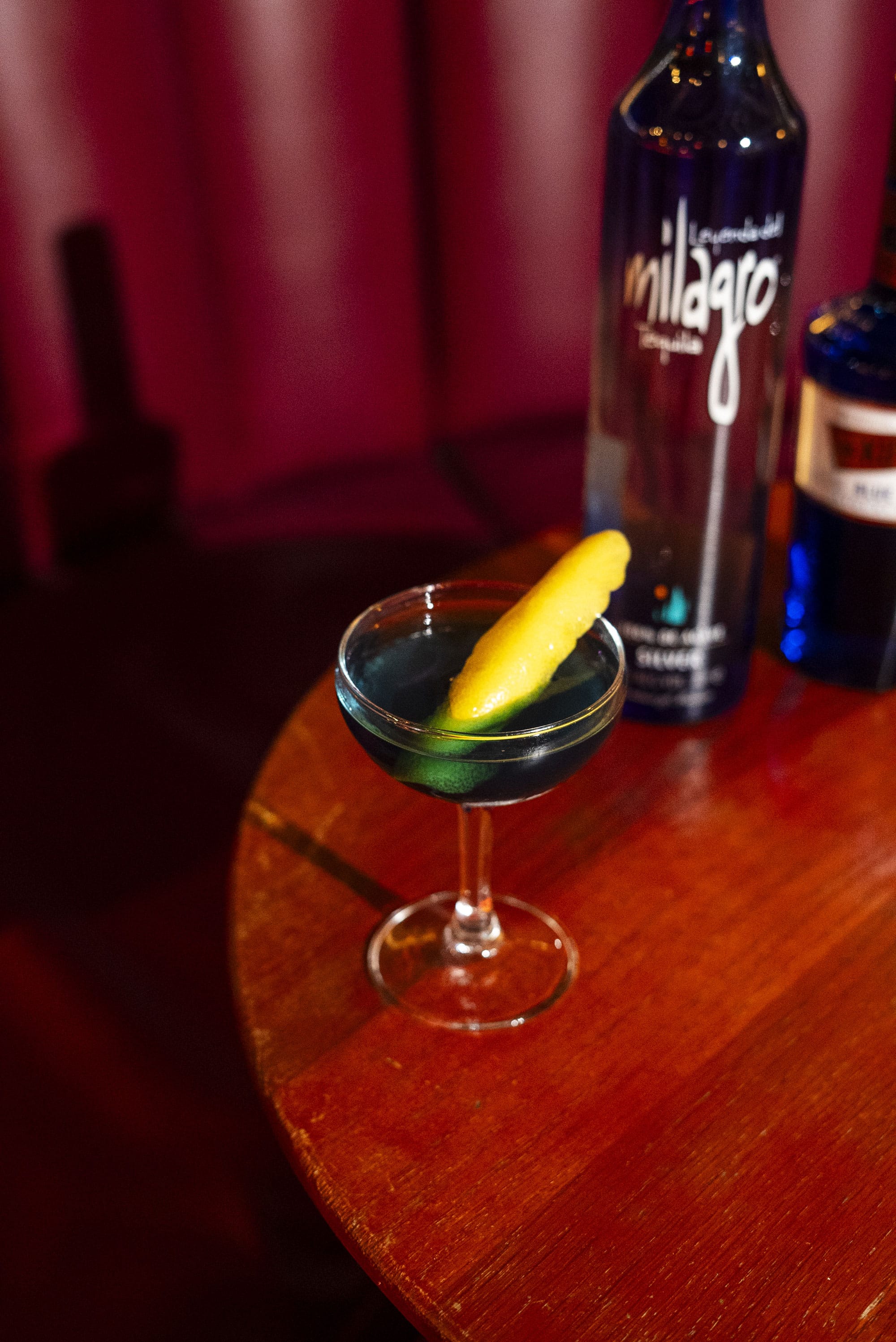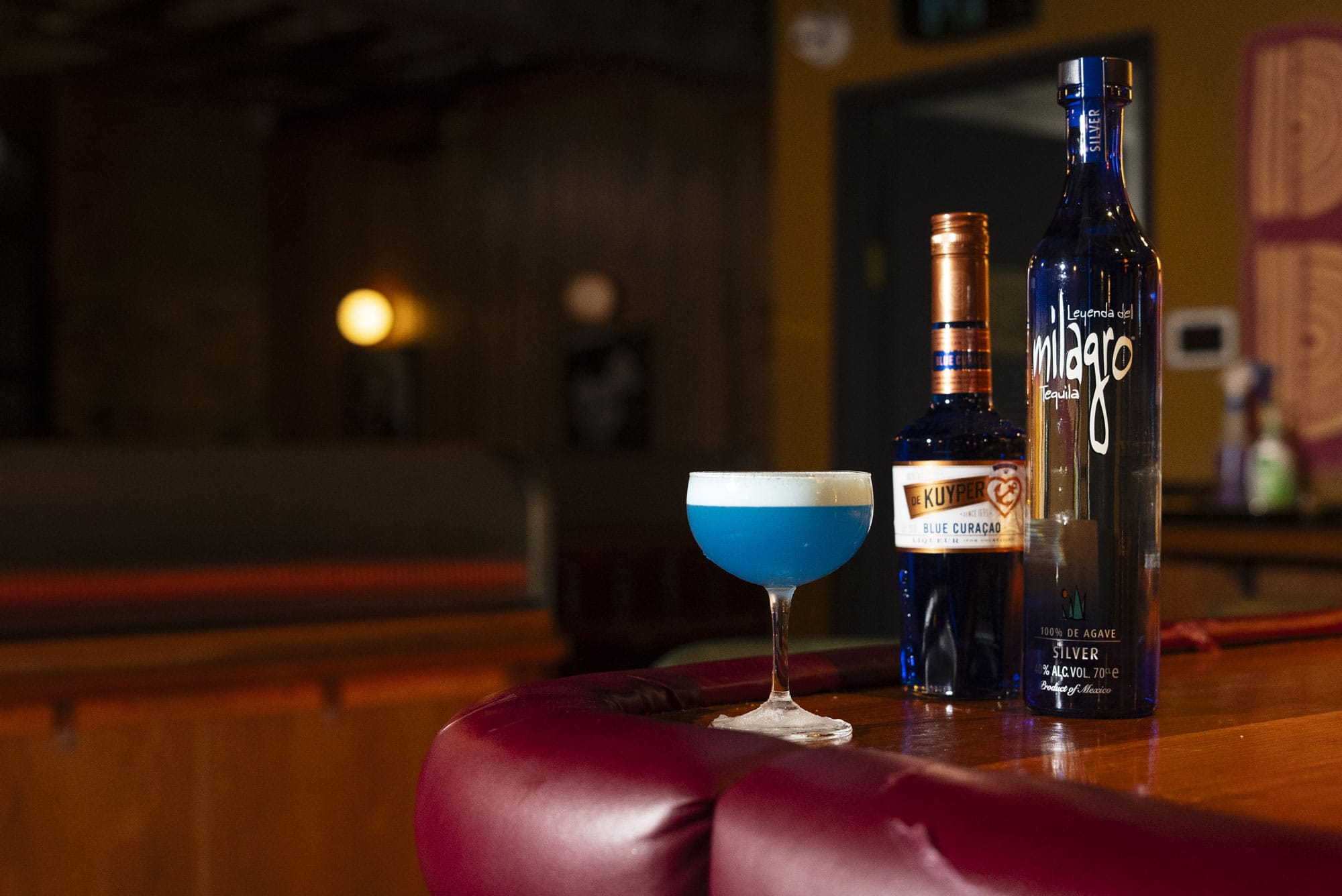You’ve heard of the Mr Potato Head theory of mixing drinks, right? No — it has nothing to do with anyone from the Potato Head resort in Seminyak, nor has it anything to do with any wholesome animated movie trilogy.
It’s the idea that a good drink — a famous classic cocktail, for instance — provides the template for another good drink; all you need to do is to pull its ingredients apart, and reassemble the drink in a new, different way, switching out the gin, say, and replacing it with another spirit like tequila; or you might pull out the drink’s modifier — maraschino, for instance — and replace it with another (and you might as well make it blue curaçao).
That’s what we’re exploring in this instalment of How To Use It, except to complicate things, we’re taking out not one ingredient but two, switching in Milagro Silver and De Kuyper Blue Curaçao.

Take the Pegu Club, add tequila — and colour
The original recipe for the Pegu Club — at least in the re-telling of Harry Craddock’s 1930 The Savoy Cocktail Book — is for two parts gin to one part curaçao, with a dash of Angostura bitters and a dash of orange bitters. Some recipes call for lime juice, others — as earlier receipts attest — call for lime cordial.
The drink is named for the Pegu Club, which opened in 1871 in what was then Burma; after the second world war and Burmese independence, the club is shuttered and over the decades, falls into disrepair.
The Pegu Club cocktail, however, survives. The first we see it in print is in 1927 in Harry MacElhone’s Barflies & Cocktails, and Harry Craddock lists it in the Savoy book in 1930.
It’s also a handy formula for riffing upon. Here, the Milagro Silver anchors the drink, giving it depth; while the orange bitters and De Kuyper Blue Curaçao take you away to the tropics.
Riff #1 — Blue Agave Club
- 45ml Milagro Silver
- 25ml De Kuyper Blue Curaçao
- 15ml lemon juice
- A dash of orange bitters.
Shake all ingredients with ice. Then strain into a chilled cocktail glass. Garnish with a lemon twist.

It’s a Cocktail, but Improved (and made blue)
It’s the ur-cocktail, the original, the definitional template — the ideal made drinkable. The Cocktail — spirit, sugar, bitters, water — is there in Jerry Thomas’ first book, the 1862 Bar-Tender’s Guide. It’s what today we’d recognise as an Old Fashioned, but the spirit didn’t need to be whiskey — it was often gin, it could be brandy, but for our purposes here, we think it should be tequila.
But you’ll note this doesn’t look like an Old Fashioned, and that’s because it ain’t. This is one of Thomas’ updates on the Old Fashioned or Cocktail formula, the Improved Cocktail.
To ‘improve’ the cocktail, Thomas adds dashes of this and that — a little absinthe here, sometimes some maraschino, sometimes curaçao. The one specification Thomas stated, however, was that the Improved version calls for the lip of the glass to be moistened with a lemon peel.
And so that’s what we’ve got here: let’s call it a Blue & Improved Tequila Cocktail.
Riff #2 — Blue & Improved Tequila Cocktail
- 10ml of De Kuyper Blue Curaçao
- 5ml absinthe
- 45ml of Milagro Silver
- A dash of Angostura bitters
- A dash of Peychaud’s bitters
Stir all ingredients briskly with ice. Strain into a chilled cocktail glass, garnish with a lemon twist.

The White Lady is a classic cocktail dating back to the 1920s, made with gin, curaçao, lemon, and egg white. It’s a sour, it’s simple, it has a catchy name — and it’s delicious.
It’s also ripe for riffing.
The switch here on the curaçao is a simple one — we’re adding some bright blueness to the drink, but that orange sweet profile remains. Indeed, switching in blue circa into this recipe is no new idea; the Blue Lady was created by Victor Cabrin (who laid claim to creating the White Lady — fellow interwar period bartenders Harry MacElhone and Harry Craddock each claimed its invention, too), and so named for its addition of blue curaçao. It was published in 1937 in The Cafe Royal Cocktail Book by William Tarling.
So we’ve moved from the White Lady to the Blue Lady — all that’s left to do is remove the gin, and put in the Milagro Silver tequila in its place.
Riff #3 — Blue Agave Lady
- 20ml De Kuyper Blue Curaçao
- 45ml Milagro Silver
- 20ml lemon juice
- 15ml egg white
Shake all ingredients briskly with ice. Strain into a chilled cocktail glass.
representative on (02) 9409 5100 or wgsa.customerservice@wgrant.com










